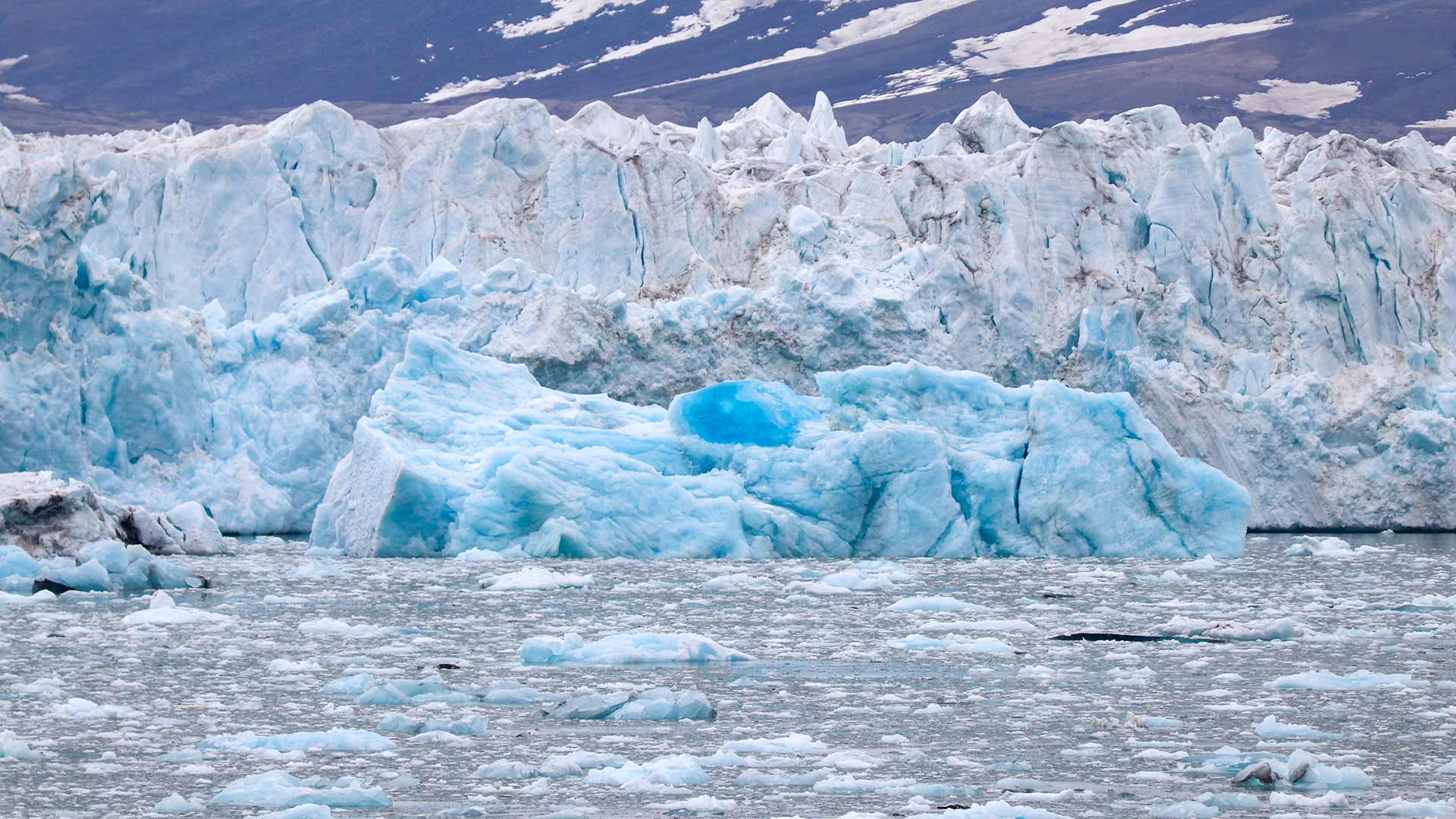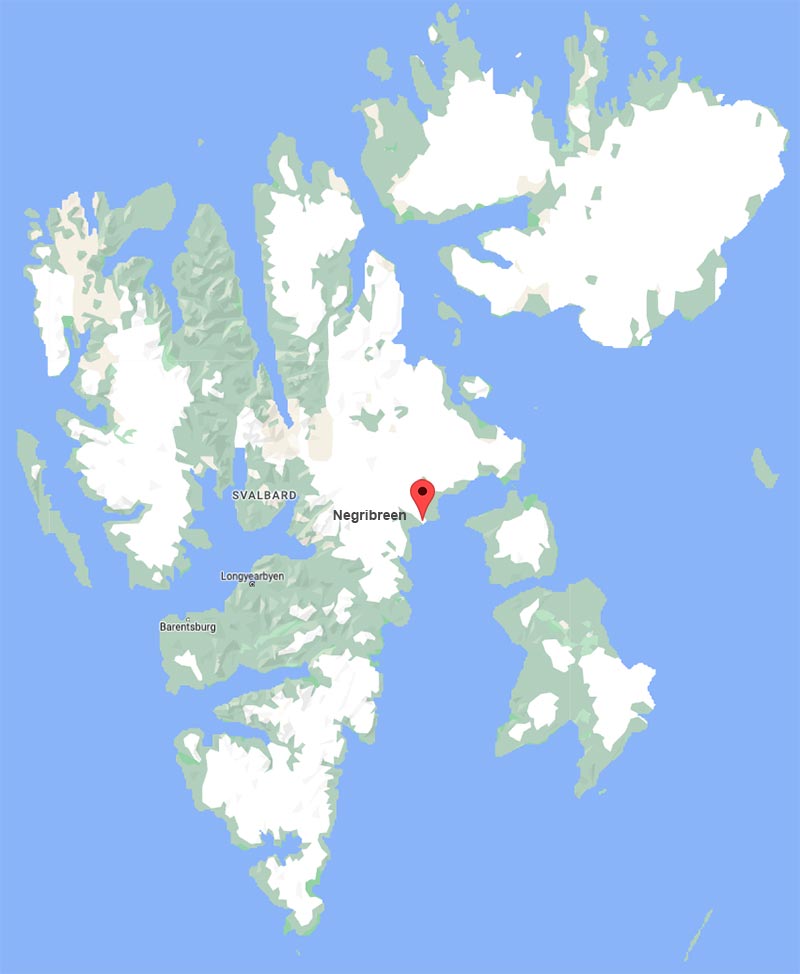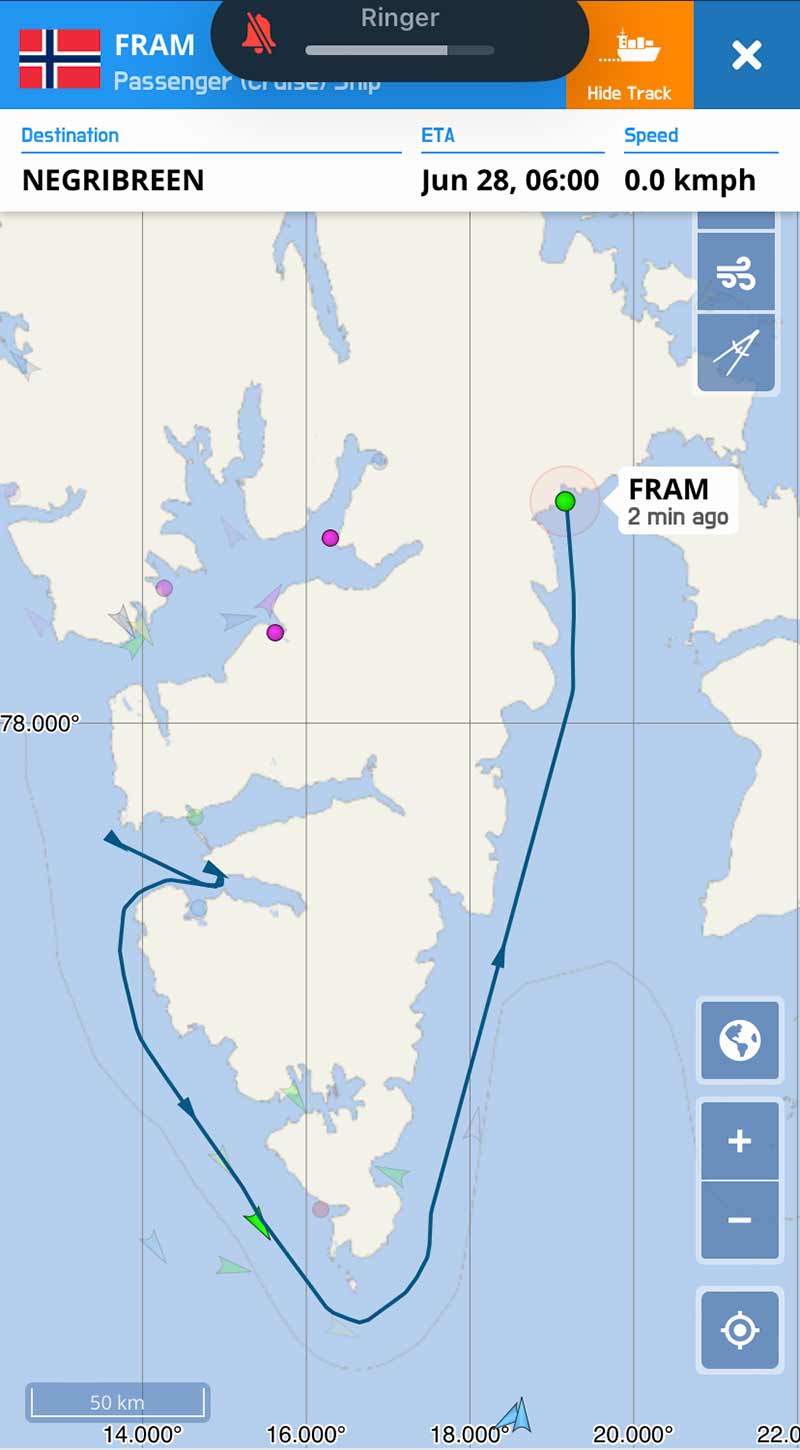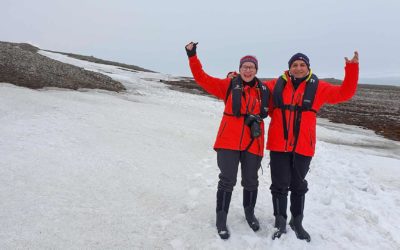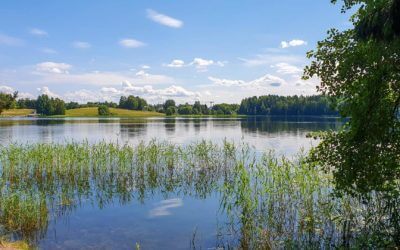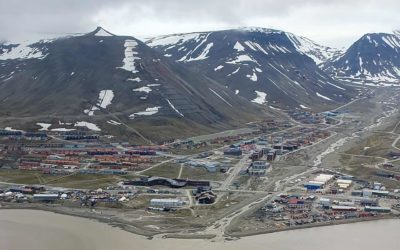We had an adventurous day ahead of us, starting with a Zodiac tour in the morning to one of the largest glaciers on Svalbard, Negribreen.
June 28
We had sailed all night and were now on the east coast of Svalbard. We got up early because the day’s program would start at 7 a.m. and soon it would be our turn with our group for the Zodiac tour along the Negribreen Glacier. It was overcast, but the view of this impressive glacier was good and we couldn’t wait to disembark.

The daily program for June 28.
Negribreen is one of the largest glaciers in Svalbard. The glacier lies entirely on land and flows into Storfjord in Olav V land and Sabine Land. Negribreen covers an area of about 1180 km2 and has a glacier front with a width of 22 km. It is named after the Italian politician and writer Cristoforo Negri (1809 – 1896). He was the first president of the Italian Geographical Society, and during his presidency Charles Darwin was named an honorary member in 1870.

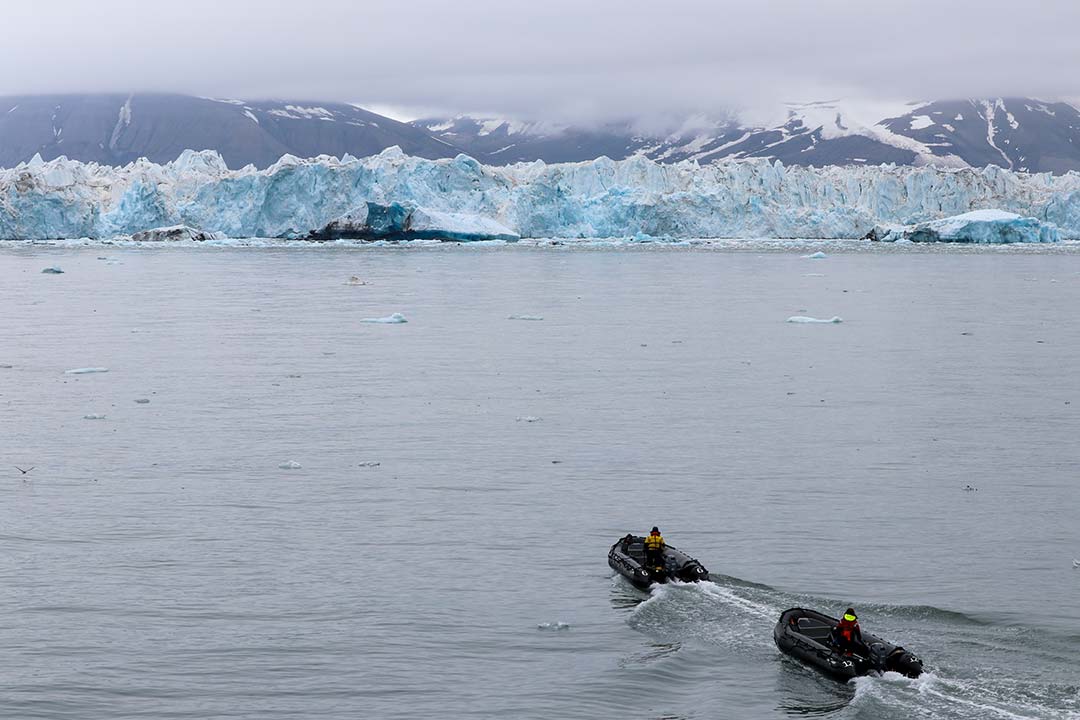
Glaciers
During our journey along the coast of Svalbard, we saw a lot of glaciers. Up to 60% of Svalbard is covered by glaciers. A glacier is a moving mass of ice that forms when snow falls on land. The
snow forms a glacier when it remains long enough on the ground and becomes thick enough to turn into ice. Due to climate change, Svalbard is warming up six times faster than the global average, which will drastically reduce the volume of glaciers in the future. But climate change has happened in the past as well. If we go back 5000 years, the average temperature in Svalbard was about 4°C warmer than today and many of the glaciers we see today probably did not exist. The largest glaciers of today would have been there, but they were much smaller. This means that many of the glaciers in Svalbard are less than 3,000 to 4,000 years old.

Negribreen is a cold glacier, which means that the ice temperature is colder than at least -0.5°C. Normally this glacier moves very slowly, not more than a few meters per year. In the summer of 2016, Negribreen began to accelerate, reaching flow rates as high as 30 meters per day! In the meantime, Negribreen has calmed down and is once again a slow giant.


The ice of the glaciers is often of a blue color, but of course it is not really blue at all. It appears blue due to the density of the ice. As more snow accumulates and clumps over time, the air bubbles in the ice are compressed, allowing light to penetrate the ice more easily. Ice absorbs red (long) wavelengths of white light and reflects blue (short) wavelengths, creating the blues seen on glaciers. Blue ice is old ice, probably thousands of years.

Our expert guide Stian who by his own admission leads a “bipolar” life: North Pole and South Pole. An adventurer who can call himself the world’s northernmost snowboarder.




In Iceland we had already walked on a glacier and visited Lake Jökulsárlón by boat, but to get so close to this huge glacier in a rubber boat was a truly extraordinary experience. This mass of ice, thousands of years old, exuded a sense of timeless serenity. The power of nature can literally be felt here, something that is often forgotten in our urban lives.





